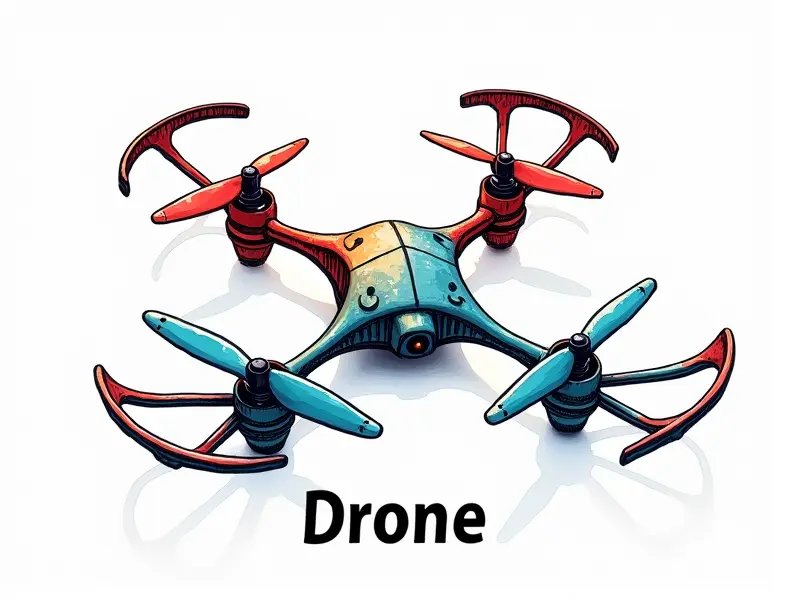FPV drone antenna placement?

Optimal Antenna Placement for FPV Drones
First-person view (FPV) drones have revolutionized the way we enjoy aerial photography and racing. However, achieving a stable and high-quality video feed is crucial for an immersive experience. One of the key factors in ensuring optimal performance is proper antenna placement on your FPV drone.
The correct positioning of antennas can significantly enhance range, signal strength, and overall quality of your FPV transmission. This guide will walk you through the best practices to maximize your FPV setup's effectiveness.
Maximize Range with Perfect FPV Antenna Setup
To achieve maximum range in your FPV drone flights, it is essential to understand how antenna placement affects signal strength and quality. Properly positioning your antennas can make a substantial difference in the distance you can fly while maintaining a clear video feed.
- Antenna Orientation: Aligning your antennas perpendicularly (orthogonal) ensures that they transmit signals at right angles to each other, reducing interference and boosting range.
- Avoid Obstructions: Keep your antennas clear of any metal objects or structures that could interfere with the signal. This includes propellers, frame components, and even battery packs.
Secrets to Great FPV Signal Strength via Antenna Placement
Signal strength is critical for maintaining a stable connection between your drone and ground station. Here are some tips to ensure you get the best possible signal:
- Antenna Length: Longer antennas generally provide better range but may be more susceptible to interference from nearby objects.
- Balanced Antennas: Ensuring both antennas are of equal length and positioned symmetrically helps in achieving a balanced signal transmission.
Boost FPV Distance with Smart Antenna Placement
The distance you can fly your drone while maintaining a clear video feed is directly related to how well your antennas are placed. Here’s what you need to know:
- Antenna Positioning: Place the antennas as far apart from each other as possible within the constraints of your drone's design.
- Avoid Interference: Keep antennas away from electronic components that may emit interference, such as ESCs (Electronic Speed Controllers).
Essential Guide to Placing FPV Drone Antennas
Proper antenna placement is crucial for achieving the best performance in your FPV drone. Here’s a step-by-step guide:
- Select Appropriate Antennas: Choose antennas that are suitable for your specific use case, whether it's racing or long-range photography.
- Mounting Location: Secure the antennas in positions where they can extend outward from the drone’s body without obstruction.
- Testing and Adjustment: Test different placements during short flights to find the optimal configuration that maximizes range and quality.
Enhance Your FPV Experience with Smart Antenna Placement
A well-placed antenna setup can transform your FPV experience, providing clearer video feeds and longer flight distances. Here’s how:
- Optimal Orientation: Ensure that the antennas are oriented at 90 degrees to each other for maximum signal strength.
- Minimize Interference: Position your antennas away from any potential sources of interference, such as metal components or electronic devices.
How to Place FPV Antennas for Maximum Performance
To achieve the best performance from your FPV drone, follow these guidelines:
- Select High-Quality Components: Use high-quality antennas and connectors that are designed specifically for FPV applications.
- Proper Mounting: Securely mount your antennas to prevent them from moving during flight, which can cause signal degradation.
Improve FPV Quality: Proper Antenna Placement Guide
The quality of your FPV video feed is directly influenced by the placement and orientation of your drone’s antennas. Here are some tips:
- Antenna Lengths: Use longer antennas for better range, but ensure they do not interfere with other components.
- Balanced Setup: Ensure that both antennas are positioned symmetrically and of equal length to maintain a balanced signal transmission.
Achieving Maximum Range with Correct FPV Antennas
To maximize the range of your FPV drone, consider these factors when placing your antennas:
- Orthogonal Placement: Positioning the antennas at right angles to each other can significantly enhance signal strength and range.
- Avoid Obstructions: Keep antennas away from any metal objects or electronic components that could interfere with the signal.
Top Tricks for Better FPV Range and Quality
Here are some advanced tips to further enhance your FPV range and quality:
- Dual Antennas: Using dual antennas can provide redundancy and improve signal stability.
- Antenna Length Adjustment: Experiment with different lengths of antennas to find the optimal configuration for maximum range and clarity.
The Impact of Antenna Positioning on FPV Performance
The positioning of your drone’s antennas has a direct impact on its performance, including range, signal strength, and video quality. By carefully considering these factors and implementing best practices, you can significantly enhance your FPV experience.
Proper antenna placement is crucial for achieving the best possible results in your FPV flights. Whether you are an experienced pilot or a beginner, following these guidelines will help you get the most out of your drone’s capabilities.

